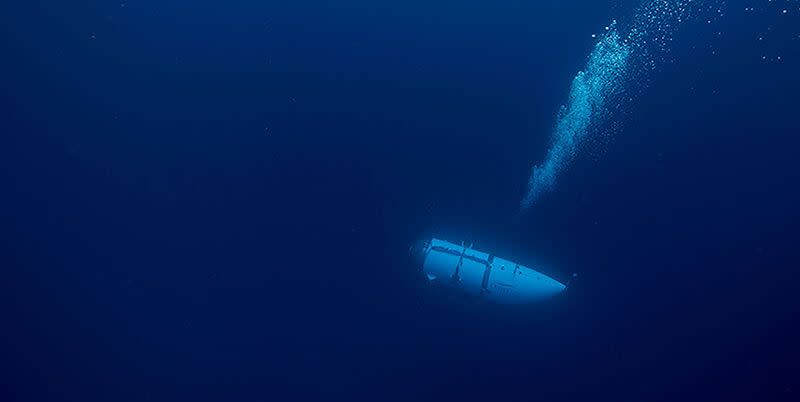Debris and 'Presumed Human Remains' Recovered From Titan Submersible

Wreckage of the Titan vessel loaded onto the Horizon Arctic contained “presumed human remains,” according to the U.S. Coast Guard.
The same remotely operated vehicle that located the Titan debris in the first place has been pulling pieces of the wreckage to the surface.
The Marine Board of Investigation (MBI) will further comb through the debris to better understand the tragic incident.
The remotely operated vehicle Odysseus 6K located the Titan wreckage about 1,600 feet from the Titanic on June 22, and remained on scene to pull pieces of debris to the surface. The U.S. Coast Guard says that debris includes “presumed human remains.”
With key pieces of the Titan now hauled out of the Atlantic Ocean, authorities from both the United States and Canada have launched investigations into the catastrophic implosion of the submersible that occurred on June 18, likely due to a loss of the pressure chamber.
“The evidence will provide investigators from several international jurisdictions with critical insights into the cause of this tragedy,” U.S. Coast Guard Captain Jason Neubauer, Marine Board of Investigation chair, says in a news release. “There is still a substantial amount of work to be done to understand the factors that led to the catastrophic loss of the Titan and help ensure a similar tragedy does not occur again.”
On June 18, the submersible—privately owned by OceanGate—started a descent south of Newfoundland, Canada, and east of Massachusetts on a tourist expedition toward the wreck of the Titanic. Less than two hours into the descent, the vessel lost contact with its base vessel on the surface, the Polar Prince. A multi-day search for the Titan ended on June 22, when the Odysseus 6K located multiple Titan debris fields near the wreckage of the Titanic, leading experts to conclude that there was a catastrophic implosion during the vessel’s initial descent that claimed the lives of all five people on board.
The Pelagic Research Services’ Odysseus 6K remained on site to both map the area and assist with “direct recovery of debris.” The company says that the Odysseus 6K is the only remotely operated vehicle that has been to the debris site at any time during the operation.
Salvaged pieces of the Titan were taken by the Horizon Arctic to St. John’s, Newfoundland, and the U.S. Coast Guard says that evidence will make its way aboard a U.S. Coast Guard cutter to a port in the United States. There, the MBI will “facilitate further analysis and testing.”
The Coast Guard says that the investigation will include continued evidence collection and witness interviews. But the Coast Guard isn’t the only entity interested in the event.
Canada’s Transportation Safety Board is also running an investigation into the incident. The Polar Prince is a Canadian-flagged vessel, and the ill-fated trip left from St. John’s. The Royal Canadian Mounted Police announced that it is “examining the circumstances” of the incident to see if a full investigation is warranted.
Tom Haueter, a former National Transportation Safety Board investigator, tells ABC that the investigation could take months, and that the team will be focused on where the Titan could have failed. “Was it a hatch failure or is it the bolts on the hatch? Was it part of the composite shell?” Haueter says. “And taking a look at all these different pieces to see, is there fatigue crack?”
Neubauer says that understanding the Titan failure may help the deep-sea industry avoid future tragedies.
You Might Also Like
